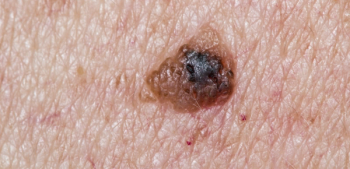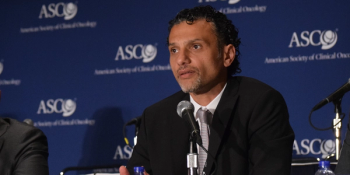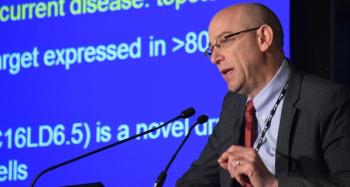
Both oncologists and cancer patients recognize the benefits of physical activity during treatment, but oncologists may feel ill-equipped to give recommendations on exercise, according to a new study.

Your AI-Trained Oncology Knowledge Connection!


Both oncologists and cancer patients recognize the benefits of physical activity during treatment, but oncologists may feel ill-equipped to give recommendations on exercise, according to a new study.

Adding selumetinib to docetaxel does not provide any significant benefit over docetaxel alone for patients previously treated for advanced KRAS-mutant non–small-cell lung cancer.

A noninvasive PET imaging method may serve as a useful predictive biomarker for responses to cancer immunotherapy, according to a new study.

Cytomegalovirus targeted vaccination plus high-dose chemotherapy with temozolomide can lead to long-term progression-free and overall survival in patients with newly diagnosed glioblastoma.

A nivolumab/ipilimumab combination significantly improved overall survival for advanced melanoma patients.

Young men who are overweight or obese are at risk of developing severe liver disease or liver cancer in later life, particularly those who have type 2 diabetes mellitus.

A novel calculator can more easily identify which esophageal adenocarcinoma patients derive an overall survival benefit from neoadjuvant chemoradiation to help guide treatment choices.

Some women with breast cancer may survive longer if they consume soy-based foods, according to a new study.

There is a critical need for new therapies for T-cell lymphomas, and with ongoing trials of mTOR and aurora kinase inhibitors, PI3K inhibitors, and others, new options may be on the horizon.

A handful of novel antibody-based therapies may soon emerge for the treatment of acute myeloid leukemia, according to a presentation at the 21st Annual International Congress on Hematologic Malignancies.

New treatment options are now available for light-chain amyloidosis, with additional ones on the way, according to a presentation at the 21st Annual International Congress on Hematologic Malignancies.

Lenalidomide maintenance significantly improves survival in patients with relapsed diffuse large B-cell lymphoma (DLBCL) who are not eligible for autologous stem cell transplantation (ASCT).

Among pediatric acute lymphoblastic leukemia patients who have favorable prognosis, an attempt to reduce the burden of chemotherapy by using lower intensity delayed intensification failed to show better outcomes.

Older patients with AML survive longer after receiving an allogeneic stem cell transplant if they are initially treated with CPX-351 liposome injection instead of the standard “7+3” chemotherapy with cytarabine and daunorubicin.

A combination of the checkpoint inhibitors nivolumab and ipilimumab continues to demonstrate superior clinical activity vs ipilimumab monotherapy in treatment-naive patients with advanced melanoma.

Adding bortezomib to bendamustine/rituximab significantly improves complete remission rates in previously untreated high-risk follicular lymphoma, according to a new study.

Among breast cancer survivors, black women are far less likely to receive BRCA testing and preventive surgery than white or Hispanic women.

A Web-based application allows for earlier detection of relapse among patients with advanced lung cancer, improving survival by 7 months.

A combination of the endoglin antibody TRC105 and pazopanib shows promising activity in patients with advanced soft-tissue sarcoma, particularly angiosarcoma.

Understanding quality of life and the detrimental impact of disease progression is critical for long-term care and survival of patients with soft-tissue sarcoma.

Postmenopausal women with early breast cancer benefit from extending AI therapy with letrozole from 5 to 10 years, and show no worsening of quality of life.

A novel first-in-class antibody can significantly extend median survival when added to standard chemotherapy for patients with advanced gastric cancer.

An antibody-drug conjugate, rovalpituzumab tesirine, shows promising efficacy against recurrent small-cell lung cancer.

Real-time classification can identify a previously unrecognized subset of high-risk patients with childhood B-cell acute lymphoblastic leukemia who have excellent chances for cure without further intensification of treatment.

Warfarin is an acceptable alternative to low-molecular-weight heparin for patients with cancer-associated thrombosis, according to a new study.

A new study validates therapeutic guidelines that recommend anticoagulant dose reductions for thrombocytopenia in cancer patients.

Children with acute lymphocytic leukemia and their parents commonly over-report the amount of daily oral chemotherapy the child takes to treat the most common blood cancer in children.

Chimeric antigen receptor T cells can eradicate large burdens of multiple myeloma, according to a new study presented at ASH.

Genetic variants increase the risk of osteonecrosis in children under age 10 with acute lymphoblastic leukemia.

The combination of the attenuated oncolytic virus talimogene laherparepvec (T-VEC) and the immune checkpoint inhibitor pembrolizumab shows activity and is well-tolerated by advanced melanoma patients.